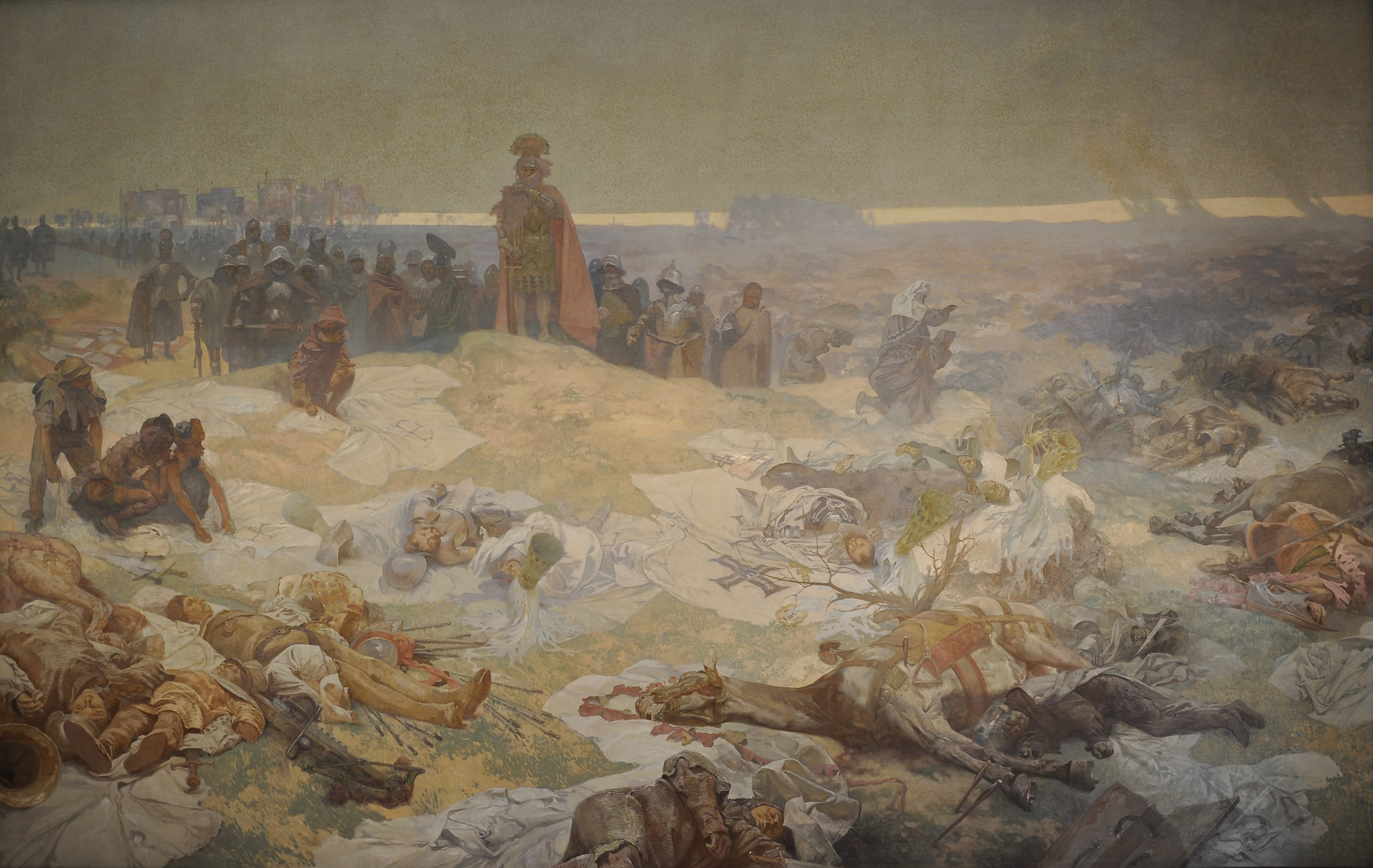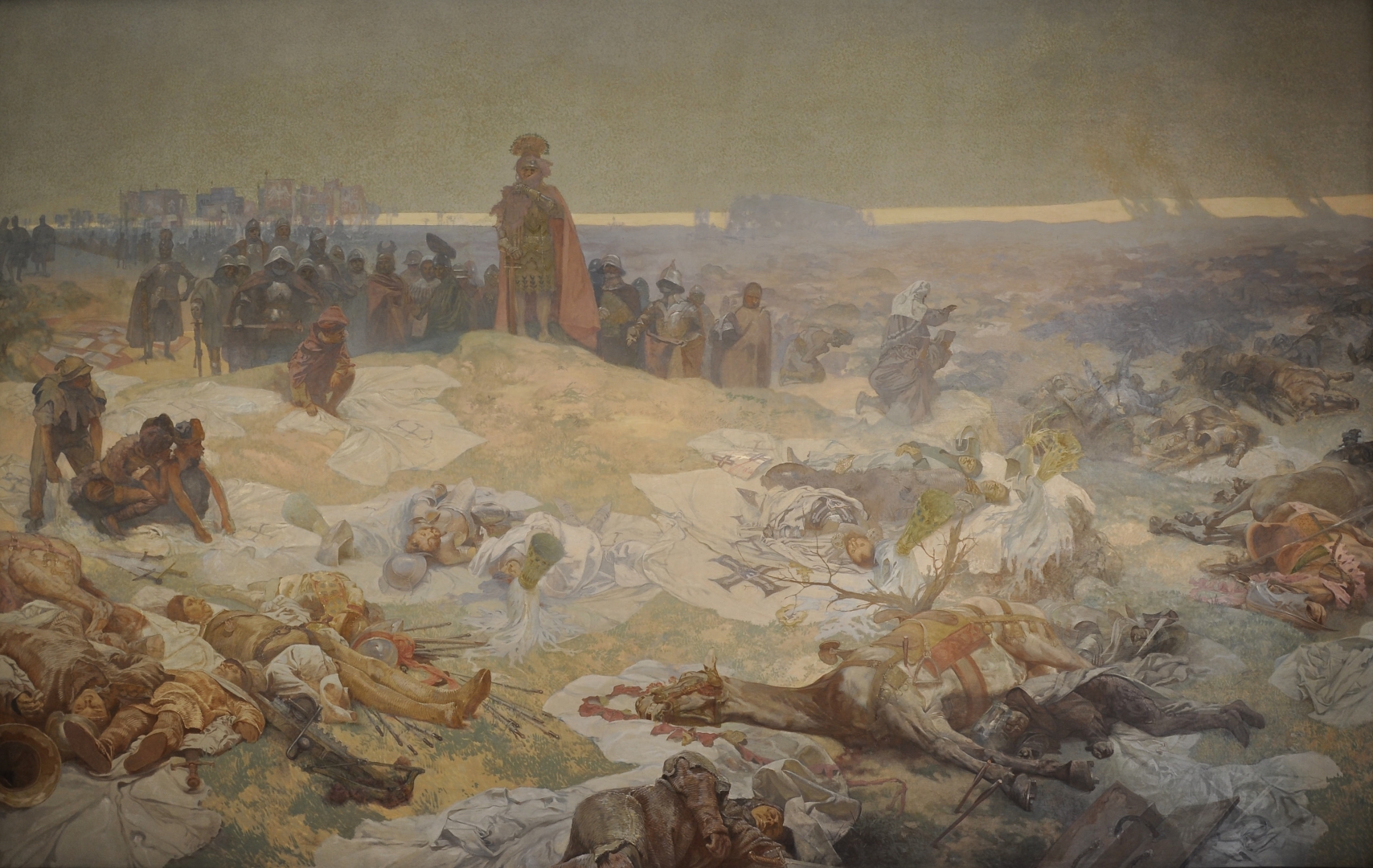AFTER THE BATTLE OF GRUNWALD
In the 12th century, during the Crusades, the Teutonic Order settled on the territory of the then Slavic Prussia. Its original task was to spread the Christian faith, but the Order also aimed to extend its power and got into territorial disputes with its neighbours. In 1409, war broke out between Prussia and Lithuania. Poland became an ally of Lithuania, as family ties also united the two countries. The decisive battle took place at Grunwald on July 15, 1410. Mercenary corps from Bohemia and Moravia also arrived to help Poles and Lithuanians. The Moravian knight Jan Sokol from Lamberk led the mercenaries, and Jan Žižka from Trocnov was most likely among them.
The painting represents the site of a bloody battle at dawn the next day. The Teutonic Order suffered a defeat, and king Władysław II Jagiełło, accompanied by his entourage, came to see his victory.
Under the hill lies the fallen Grand Master of the Teutonic Knights, Ulrich von Jungingen, with a cross on his chest. The king witnesses the number of slain enemies and the immense sacrifices that his warriors had to make. Overwhelmed by unnecessary death, he covers his face in pain.
In the background, the Orthodox Patriarch blesses all the fallen, especially the Smolens, who stood in the front row. Numerous white cloaks with black crosses covering the battlefield symbolise the broken power of the Order, and Poland and Lithuania managed to defend their freedom. In a crusader cloak, a figure kneels to the left, and behind it stands a warrior in armour and a broad helmet. Directly behind him is Jan Sokol from Lamberk, and on the left next to him is Jan Žižka from Trocnov with a tip over his right eye.
Mucha portrays this victory in his typical fashion. Even this great triumph of the Slavs is not depicted as a celebration of the victorious battle but as a piece condemning the violence, serving as a call for the peaceful coexistence of nations.

